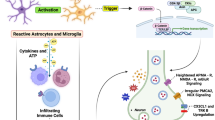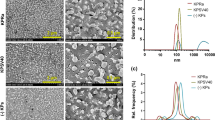Abstract
Neuropathic pain (NP) is caused by damage to the nervous system due to reactive oxygen spices (ROS) increase, antioxidants reduction, ATP production imbalance, and induction of apoptosis. In this investigation, we applied low-level laser 660 nm (photobiomodulation therapy) as a new strategy to modulate pain. In order to study the effects of photobiomodulation therapy (660 nm) on NP, chronic constriction injury (CCI) model was selected. Low-level laser of 660 nm was used for 2 weeks. Thermal and mechanical hyperalgesia were measured before and after surgery on days 7 and 14, respectively. Paw withdrawal thresholds were also evaluated. Expression of p2x3, Bax, and bcl2 protein was measured by western blotting. The amount of glutathione (GSH) was measured in the spinal cord by continuous spectrophotometric rate determination method. The results are presented as mean ± SD. Statistical analysis of data was carried out using SPSS 21. CCI decreased the pain threshold, 2-week photobiomodulation therapy significantly increased mechanical and thermal threshold, decreased P2X3 expression (p < 0.001), and increased bcl2 expression (p < 0.01), but it was not effective on the Bax expression. We speculated that although photobiomodulation therapy increased ROS generation, it increased antioxidants such as GSH. Increase in bcl2 is another mitochondrial protection mechanism for cell survival and that pain relief and decrease in P2X3 expression confirm it.




Similar content being viewed by others
References
Xu ZZ et al. Inhibition of mechanical allodynia in neuropathic pain by TLR5-mediated A-fiber blockade. Nat Med, 2015
Kallenborn-Gerhardt W et al (2013) NOXious signaling in pain processing. Pharmacol Ther 137(3):309–317
Devasagayam TP et al (2004) Free radicals and antioxidants in human health: current status and future prospects. J Assoc Physicians India 52:794–804
de Novellis V et al (2004) Blockade of glutamate mGlu5 receptors in a rat model of neuropathic pain prevents early over-expression of pro-apoptotic genes and morphological changes in dorsal horn lamina II. Neuropharmacology 46(4):468–479
Amin B et al (2014) Ceftriaxone, a beta-lactam antibiotic, modulates apoptosis pathways and oxidative stress in a rat model of neuropathic pain. Biomed Res Int 2014:937568
Kawasaki Y et al (2008) Cytokine mechanisms of central sensitization: distinct and overlapping role of interleukin-1beta, interleukin-6, and tumor necrosis factor-alpha in regulating synaptic and neuronal activity in the superficial spinal cord. J Neurosci 28(20):5189–5194
Ellis A, Bennett DL (2013) Neuroinflammation and the generation of neuropathic pain. Br J Anaesth 111(1):26–37
Ren K, Dubner R (2010) Interactions between the immune and nervous systems in pain. Nat Med 16(11):1267–1276
Ballini E et al (2011) Characterization of three diaminopyrimidines as potent and selective antagonists of P2X3 and P2X2/3 receptors with in vivo efficacy in a pain model. Br J Pharmacol 163(6):1315–1325
Gonzalez-Rodriguez S et al (2009) Involvement of enkephalins in the inhibition of osteosarcoma-induced thermal hyperalgesia evoked by the blockade of peripheral P2X3 receptors. Neurosci Lett 465(3):285–289
Burnstock G (2013) Purinergic mechanisms and pain—an update. Eur J Pharmacol 716(1–3):24–40
Hashmi JT et al (2010) Role of low-level laser therapy in neurorehabilitation. PM R 2(12 Suppl 2):S292–S305
Chagas LR et al (2015) Expression of mPGES-1 and IP mRNA is reduced by LLLT in both subplantar and brain tissues in the model of peripheral inflammation induced by carrageenan. Lasers Med Sci 30(1):83–88
Wang P et al (2014) Effects of low-level laser therapy on joint pain, synovitis, anabolic, and catabolic factors in a progressive osteoarthritis rabbit model. Lasers Med Sci 29(6):1875–1885
Meng C, He Z, Xing D (2013) Low-level laser therapy rescues dendrite atrophy via upregulating BDNF expression: implications for Alzheimer’s disease. J Neurosci 33(33):13505–13517
Ling Q et al (2014) Activated ERK/FOXM1 pathway by low-power laser irradiation inhibits UVB-induced senescence through down-regulating p21 expression. J Cell Physiol 229(1):108–116
Masoumipoor M et al (2014) Effects of 660- and 980-nm low-level laser therapy on neuropathic pain relief following chronic constriction injury in rat sciatic nerve. Lasers Med Sci 29(5):1593–1598
Bennett GJ, Xie YK (1988) A peripheral mononeuropathy in rat that produces disorders of pain sensation like those seen in man. Pain 33(1):87–107
Hargreaves K et al (1988) A new and sensitive method for measuring thermal nociception in cutaneous hyperalgesia. Pain 32(1):77–88
Randall LO, Selitto JJ (1957) A method for measurement of analgesic activity on inflamed tissue. Arch Int Pharmacodyn Ther 111(4):409–419
Harris C, Dixon M, Hansen JM (2004) Glutathione depletion modulates methanol, formaldehyde and formate toxicity in cultured rat conceptuses. Cell Biol Toxicol 20(3):133–145
Wendel A. (1980) Glutathione peroxidase. Enzymatic basis of detoxication. 1:333–353
Zhu YJ et al (2008) Effects of acrylamide on the nervous tissue antioxidant system and sciatic nerve electrophysiology in the rat. Neurochem Res 33(11):2310–2317
Echeverry S et al (2011) Peripheral nerve injury alters blood-spinal cord barrier functional and molecular integrity through a selective inflammatory pathway. J Neurosci 31(30):10819–10828
Choi YK, Kim KW (2008) Blood-neural barrier: its diversity and coordinated cell-to-cell communication. BMB Rep 41(5):345–352
Gravvanis AI et al (2007) The beneficial effect of genetically engineered Schwann cells with enhanced motility in peripheral nerve regeneration: review. Acta Neurochir Suppl 100:51–56
Wang CZ et al (2014) Low-level laser irradiation improves functional recovery and nerve regeneration in sciatic nerve crush rat injury model. PLoS One 9(8):e103348
Buravlev EA et al (2014) Effects of low-level laser therapy on mitochondrial respiration and nitrosyl complex content. Lasers Med Sci 29(6):1861–1866
Nakatsuka T et al (2003) Distinct roles of P2X receptors in modulating glutamate release at different primary sensory synapses in rat spinal cord. J Neurophysiol 89(6):3243–3252
Xiong W et al (2015) Effects of intermedin on dorsal root ganglia in the transmission of neuropathic pain in chronic constriction injury rats. Clin Exp Pharmacol Physiol 42(7):780–787
Burnstock G (1990) Noradrenaline and ATP as cotransmitters in sympathetic nerves. Neurochem Int 17(2):357–368
Fukuoka T et al (2002) VR1, but not P2X(3), increases in the spared L4 DRG in rats with L5 spinal nerve ligation. Pain 99(1–2):111–120
Pubill D et al (2001) ATP induces intracellular calcium increases and actin cytoskeleton disaggregation via P2x receptors. Cell Calcium 29(5):299–309
Ryu JJ et al (2010) Laser modulation of heat and capsaicin receptor TRPV1 leads to thermal antinociception. J Dent Res 89(12):1455–1460
Varija D et al (2009) Prolonged constriction of sciatic nerve affecting oxidative stressors & antioxidant enzymes in rat. Indian J Med Res 129(5):587–592
Pathak NN et al (2014) Atorvastatin attenuates neuropathic pain in rat neuropathy model by down-regulating oxidative damage at peripheral, spinal and supraspinal levels. Neurochem Int 68:1–9
Chu K et al (2007) Pharmacological induction of ischemic tolerance by glutamate transporter-1 (EAAT2) upregulation. Stroke 38(1):177–182
Wei MC et al (2001) Proapoptotic BAX and BAK: a requisite gateway to mitochondrial dysfunction and death. Science 292(5517):727–730
Jacobson J, Duchen MR (2002) Mitochondrial oxidative stress and cell death in astrocytes—requirement for stored Ca2+ and sustained opening of the permeability transition pore. J Cell Sci 115(Pt 6):1175–1188
Zhang L, Zhang Y, Xing D (2010) LPLI inhibits apoptosis upstream of Bax translocation via a GSK-3beta-inactivation mechanism. J Cell Physiol 224(1):218–228
Tan J et al (2005) Pharmacologic modulation of glycogen synthase kinase-3beta promotes p53-dependent apoptosis through a direct Bax-mediated mitochondrial pathway in colorectal cancer cells. Cancer Res 65(19):9012–9020
Oron U (2006) Photoengineering of tissue repair in skeletal and cardiac muscles. Photomed Laser Surg 24(2):111–120
Karu TI, Kolyakov SF (2005) Exact action spectra for cellular responses relevant to phototherapy. Photomed Laser Surg 23(4):355–361
Huang YY et al (2011) Biphasic dose response in low level light therapy—an update. Dose-Response 9(4):602–618
Ibuki FK et al (2013) Laser irradiation affects enzymatic antioxidant system of streptozotocin-induced diabetic rats. Lasers Med Sci 28(3):911–918
Acknowledgments
This study was supported by Iran University of medical Sciences (IUMS), faculty of Medicine. The authors would like to thank the Faculty of Allied Medicine and Physiology research center staffs.
Author information
Authors and Affiliations
Corresponding author
Ethics declarations
All experiments were done according to the guidelines on ethical standards approved by the Animal Experimentation Ethics Committee of Iran University of Medical Sciences.
Rights and permissions
About this article
Cite this article
Janzadeh, A., Nasirinezhad, F., Masoumipoor, M. et al. Photobiomodulation therapy reduces apoptotic factors and increases glutathione levels in a neuropathic pain model. Lasers Med Sci 31, 1863–1869 (2016). https://doi.org/10.1007/s10103-016-2062-0
Received:
Accepted:
Published:
Issue Date:
DOI: https://doi.org/10.1007/s10103-016-2062-0




